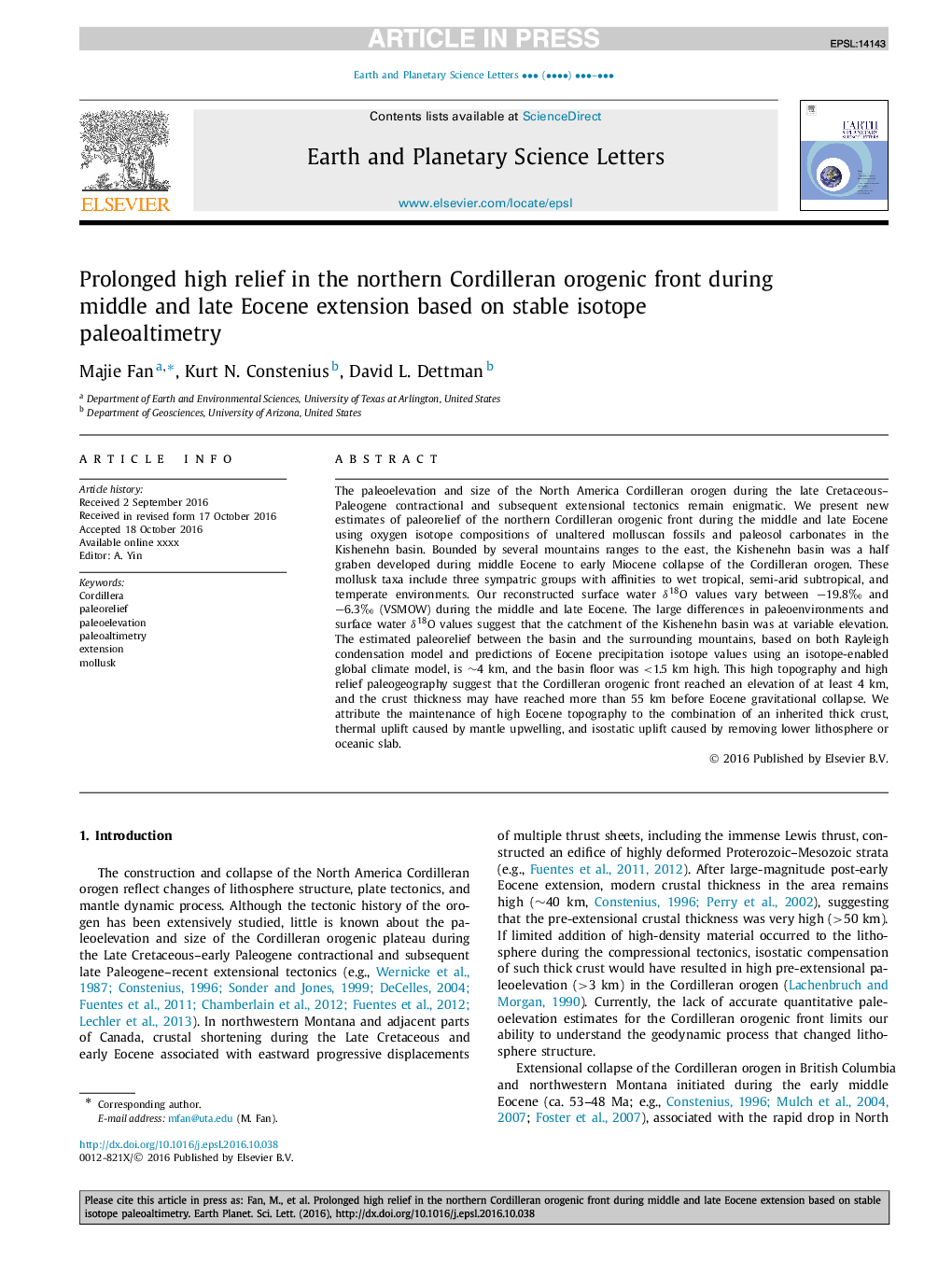| Article ID | Journal | Published Year | Pages | File Type |
|---|---|---|---|---|
| 5780076 | Earth and Planetary Science Letters | 2017 | 9 Pages |
Abstract
The paleoelevation and size of the North America Cordilleran orogen during the late Cretaceous-Paleogene contractional and subsequent extensional tectonics remain enigmatic. We present new estimates of paleorelief of the northern Cordilleran orogenic front during the middle and late Eocene using oxygen isotope compositions of unaltered molluscan fossils and paleosol carbonates in the Kishenehn basin. Bounded by several mountains ranges to the east, the Kishenehn basin was a half graben developed during middle Eocene to early Miocene collapse of the Cordilleran orogen. These mollusk taxa include three sympatric groups with affinities to wet tropical, semi-arid subtropical, and temperate environments. Our reconstructed surface water δ18O values vary between â19.8â° and â6.3â° (VSMOW) during the middle and late Eocene. The large differences in paleoenvironments and surface water δ18O values suggest that the catchment of the Kishenehn basin was at variable elevation. The estimated paleorelief between the basin and the surrounding mountains, based on both Rayleigh condensation model and predictions of Eocene precipitation isotope values using an isotope-enabled global climate model, is â¼4 km, and the basin floor was <1.5 km high. This high topography and high relief paleogeography suggest that the Cordilleran orogenic front reached an elevation of at least 4 km, and the crust thickness may have reached more than 55 km before Eocene gravitational collapse. We attribute the maintenance of high Eocene topography to the combination of an inherited thick crust, thermal uplift caused by mantle upwelling, and isostatic uplift caused by removing lower lithosphere or oceanic slab.
Related Topics
Physical Sciences and Engineering
Earth and Planetary Sciences
Earth and Planetary Sciences (General)
Authors
Majie Fan, Kurt N. Constenius, David L. Dettman,
